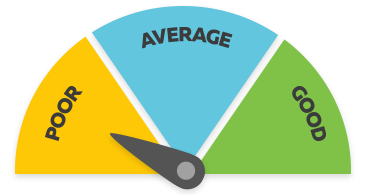Tailor/Dressmaker
Kaihanga Kākahu
Alternative titles for this job
Tailors/dressmakers design, make, alter and repair clothing.
Pay
Tailors/dressmakers usually earn
$24 per hour
Source: NZ Fashion Tech and Competenz, 2017.
Job opportunities
Pay
Pay for tailors/dressmakers varies depending on skills and experience.
- Tailors/dressmakers can earn $24 or more an hour.
Sources: New Zealand Fashion Tech, 2017; and Competenz, 2017.
- PAYE.net.nz website - use this calculator to convert pay and salary information
- Employment New Zealand website - information about minimum wage rates
(This information is a guide only. Find out more about the sources of our pay information)
What you will do
Tailors/dressmakers may do some or all of the following:
- discuss customers' clothing requirements
- take customers' measurements and fit clothing on customers
- estimate how much the clothing will cost to make
- source materials
- mark and cut the material according to the design
- sew clothing
- do alterations or add details such as padding to clothing
- design or alter patterns.
Skills and knowledge
Tailors/dressmakers need to have:
- sewing skills and knowledge of tailoring techniques
- knowledge of a range of sewing equipment
- understanding of garment construction, and pattern-making skills
- knowledge of human body shapes
- clothing design skills
- knowledge of different fashions
- knowledge of fabric types, colours and fabric care
- cutting skills.
Tailors/dressmakers who run their own business also need business skills.
Working conditions
Tailors/dressmakers:
- work full or part-time hours. Self-employed tailors/dressmakers may work irregular hours, including evenings and weekends
- work in their own homes, workrooms, factories or showrooms
- may travel locally or to other areas to visit clients.
What's the job really like?

Antonio Antonopoulos
Tailor
A practical decision that paid off
When he was just 17, Antonio Antonopoulos started an apprenticeship with his uncle, who had a tailoring business. "Basically I had dropped out of school, and didn’t know what else to do," he says.
But this practical choice turned out very well – by the time he was 21, Antonio owned his first tailoring shop in Wellington, which soon grew to two more shops.
Gathering skills over different continents
After a tailoring factory he had set up began to struggle, Antonio moved to London to set up shop for the next 13 years. This experience in London’s competitive tailoring industry honed his skills further. On his return to New Zealand, Antonio again started a successful business in clothing alterations and made-to-measure suiting for formal wear.
Patience in the face of challenges
Antonio is the first to admit it’s not an easy job. “You need a lot of patience to do this job – if you’ve got a customer taking ages to decide on the right trouser length you just can’t say, 'Trust me, I’ve been doing this for 35 years."
"You need not just sewing skills but customer service skills because it’s not just about sitting at the machine. I think I’ve got to where I am because of my personality, and the customers liking me.”
Entry requirements
There are no specific requirements to become a tailor/dressmaker. However, most employers prefer to hire people with sewing experience or qualifications, such as a New Zealand Certificate in Fashion Technology (Level 3).
Secondary education
A minimum of three years of secondary education is recommended. Useful subjects include design and visual communication (graphics), digital technologies, mathematics and processing technologies.
Personal requirements
Tailors/dressmakers need to be:
- creative, with an eye for colour
- quick and neat
- accurate, with an eye for detail
- able to work well under pressure
- able to be honest with their clients about how clothes look on them
- good at customer service
- good communicators and listeners, with the ability to interpret a client's requirements.
You need to be fast and good with your hands – this is not a job you can do with slow and clumsy hands.
Antonio Antonopoulos
Tailor
Useful experience
Useful experience for tailors/dressmakers includes:
- community or night courses in dressmaking
- work as a sewing machinist
- work in a clothing factory or workroom.
Physical requirements
Tailors/dressmakers need to have good hand-eye co-ordination, normal colour vision and good eyesight (with or without corrective lenses).
Find out more about training
- Competenz
- 0800 526 1800 - info@competenz.org.nz - www.competenz.org.nz
- Whitecliffe College of Art and Design
- 0800 800 300 - admissions@whitecliffe.ac.nz - www.whitecliffe.ac.nz
Check out related courses
What are the chances of getting a job?
While the number of available roles is currently low, employers still struggle to find tailors/dressmakers with the right skills and practical experience as there are not enough students studying fashion technology.
According to Statistics New Zealand, the number of tailor/dressmaker jobs is expected to rise between now and 2027.
This is due to growing demand for:
- high-end clothing such as suits and wedding dresses
- clothing bought online, such as wedding dresses, needing alteration
- environmentally-friendly clothing
- clothing made in New Zealand.
While the number of available roles is currently low, employers still struggle to find tailors/dressmakers with the right skills and practical experience as there are not enough students studying fashion technology.
Experience in sewing and customer service a must
Practical experience is important for getting work as a tailor/dressmaker. Many tailors/dressmakers have experience in other clothing-related roles such as cutting and sewing, or through a fashion technology course.
Employers also prefer to hire tailors/dressmakers with customer service experience.
According to the Census, 684 tailors/dressmakers worked in New Zealand in 2018.
Types of employers varied
Tailors/dressmakers may work for:
- high-end and businesswear tailors
- clothing alteration shops
- clothing retailers
- wedding and special occasion wear makers
- corporate wardrobe manufacturers.
Many tailors/dressmakers are self-employed.
Sources
- Marshall-Smith, V, academic director, NZ Fashion Tech, careers.govt.nz interview, November 2017.
- Ministry of Business, Innovation and Employment, 'Occupation Outlook – Tailors and Patternmakers', accessed October 2017, (www.mbie.govt.nz).
- New Zealand Apparel, 'Is NZ-Made Dead?', 2 August 2017, (www.apparelmagazine.co.nz).
- NZ Fashion Tech, 'Changing Times', accessed October 2017, (www.nzfashiontech.ac.nz).
- NZ Fashion Tech, 'Gaining Employment', accessed October 2017, (www.nzfashiontech.ac.nz).
- NZ Fashion Tech, 'Industry Opportunities', accessed October 2017, (www.nzfashiontech.ac.nz).
- Ryan, H, 'Fashion Industry's Moment to Shine', NZ Herald, 26 August 2017, (www.nzherald.co.nz).
- Stats NZ, '2018 Census Data', 2019.
(This information is a guide only. Find out more about the sources of our job opportunities information)
Progression and specialisations
Tailors/dressmakers may progress to set up their own business, or with further training become garment technicians, patternmakers or fashion designers.
Tailors/dressmakers may specialise in:
- alterations
- wedding and special occasion gowns
- suits
- corporate wear
- work wear.
Last updated 25 March 2025

